Karl Lagerfeld and the Opéra National De Paris: A Multi-Sensorial, Artistic Collaboration
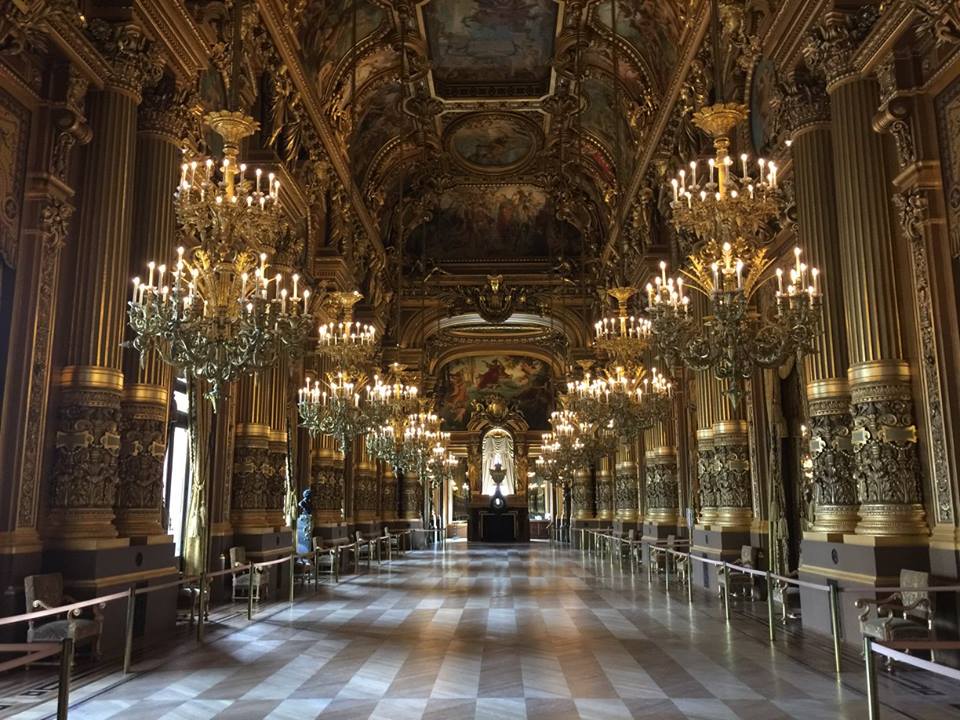
The Haute Couture ballet costumes and set design for George Balanchine’s Brahms-Schönberg Quartet were created by Karl Lagerfeld for the Opéra national de Paris (OnP) during its 2015/2016 season. Choreographers included renowned dancers Bart Cook and Maria Calegari.
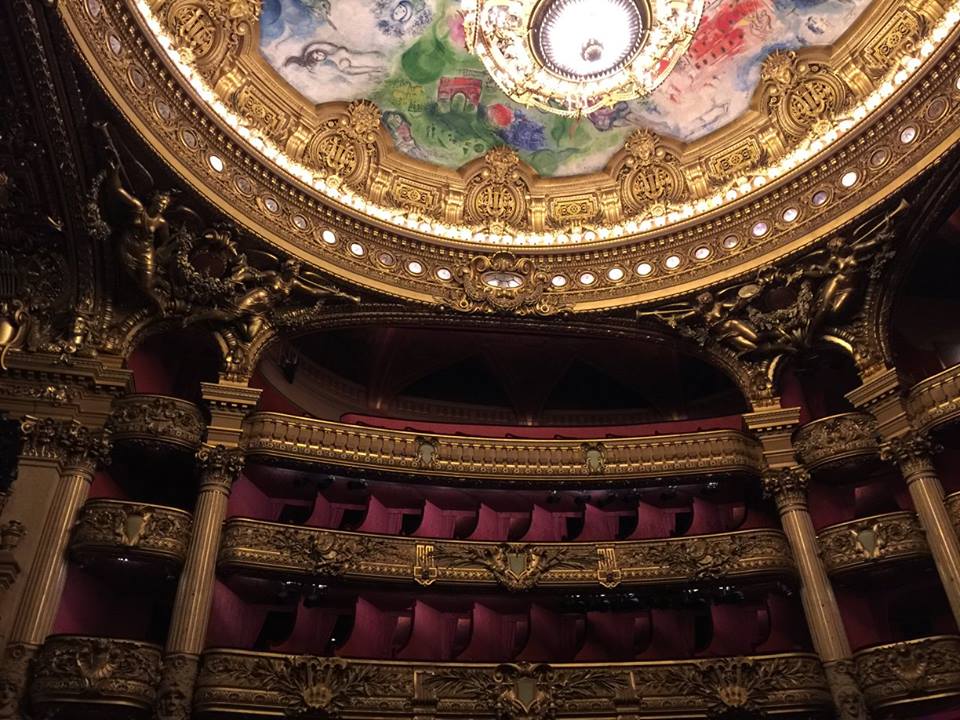
Image Credit: Jewel Goode. Opéra national de Paris, Palais Garnier. All Rights Reserved, 2016.
The costumes reflected an innovative, collaborative approach to fashion in the rapidly evolving globalized community. They fully activated the senses while providing elements of fantasy of a bygone era.
“There will never be a world without fantasy, which expresses the unconscious unfulfilled" -S. Kaiser, 1997.
Art, fashion, and culture inhabit the same multi-sensorial landscape. They represent a constantly evolving visual language which must be effectively transmitted to spectators. Inaugurated in 1875, the OnP formerly represented an elitist Parisian society.
The institution was historically linked to utopian images of wealth, power, prestige, and elegance. Therefore, Lagerfeld’s costume designs for each of Balanchine's four acts needed to the encapsulate the Zeitgeit of the OnP.
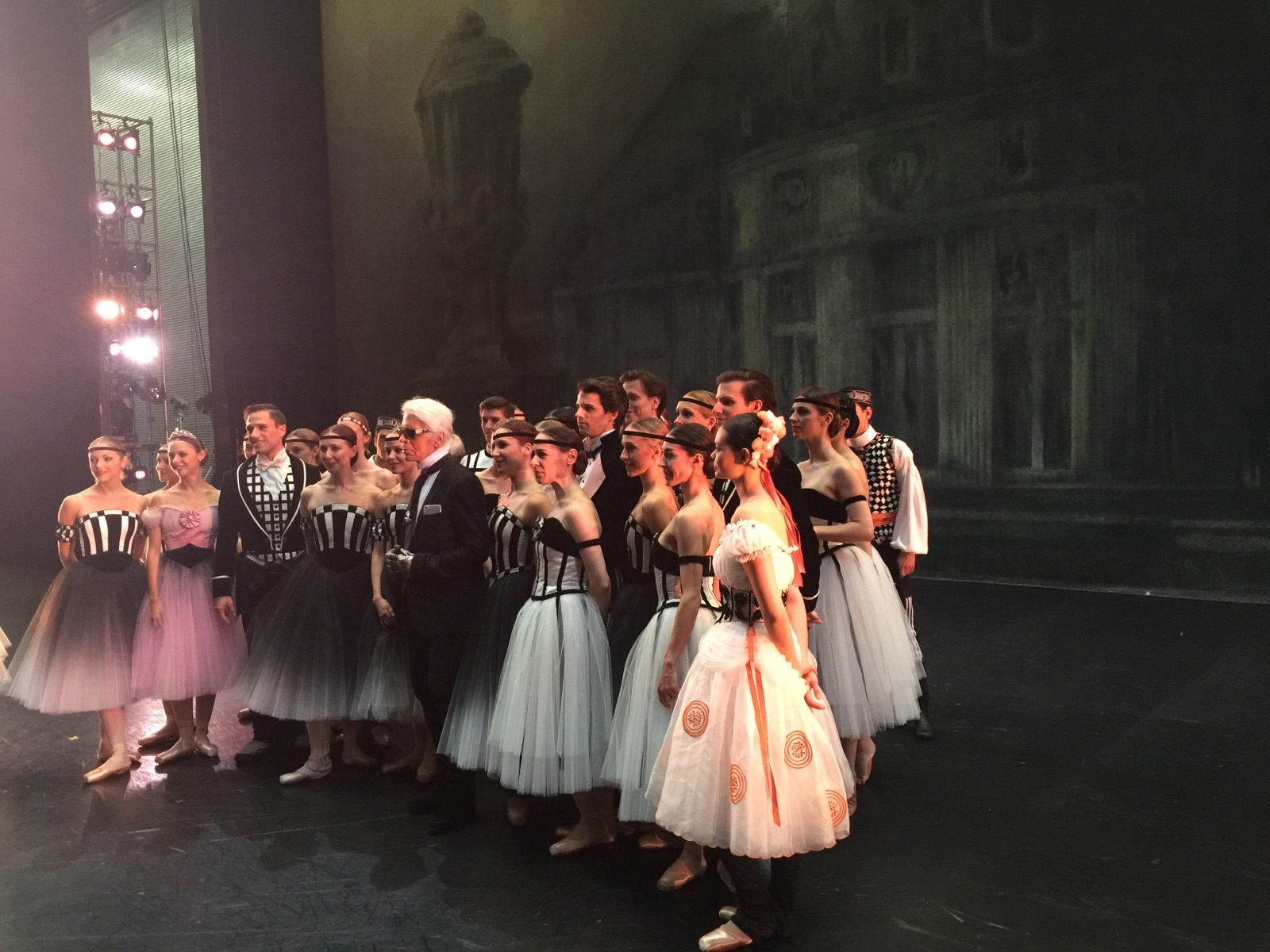
That essence was effectively transmitted through a consistent visual theme involving textures, costume accessories, and classical ballet silhouettes. A muted color palette of white, pale pink, and crème-orange created a bold visual juxtaposition with the monochromatic interjection of black and white details and piping.
Traditionally, feminine elements and curvilinear shapes were visible with velvet headpieces and armbands, satin ribbons, tulle/chiffon tutus, and bejeweled caps. These contrasted the straight lines and geometrical shapes traditionally considered masculine.
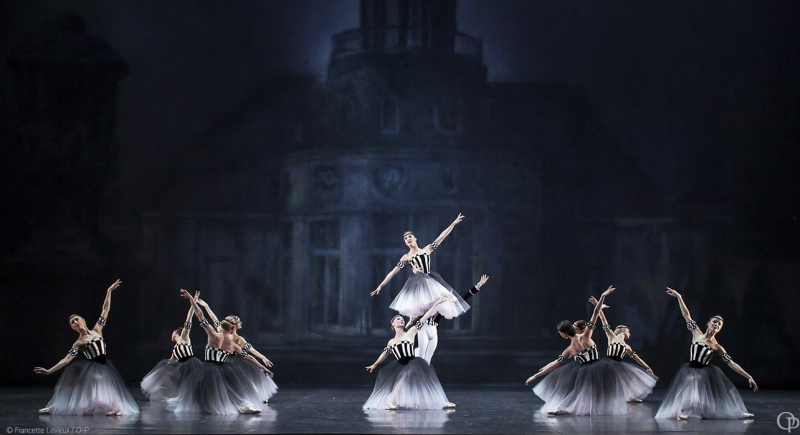
Image Credit: Irenebritnation.typepad.com
Lagerfeld conceptualized various sketches which were inspired by the Vienna Secession, an artistic movement established in 1897. Costumes were skillfully constructed in the OnP couture atelier according to Lagerfeld’s initial artistic intentions, but still allowed for subsequent modifications and adjustments of material, fabric, and accessories.
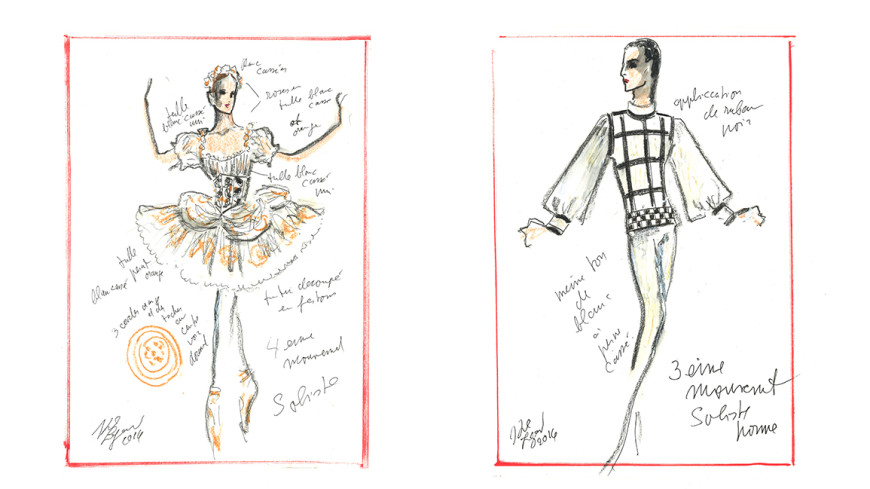
Thus, costumes were individually adapted to each ballet dancer, taking into consideration rigorous choreographic maneuvers. They also accounted for other variables including lighting, sound, and stage conditions. This resulted in the creation of regal, yet fashionable costumes which contributed to the multi-sensorial landscape while integrating an advanced degree of technological innovation and functionality.
.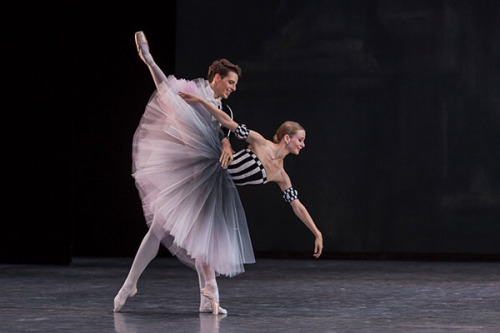
Image Credit: Tumblr.com
Lagerfeld’s extensive research resulted in the creation of tailored men’s black and white suede waistcoats, as well as folklore-inspired, embroidered headdresses.
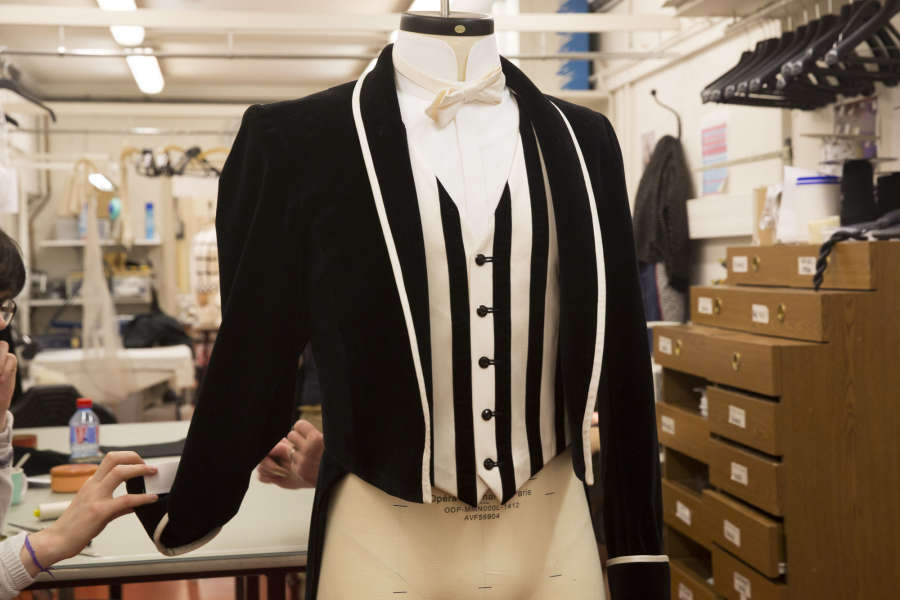
Image Credit: Operadefrance.fr
The women costumes included black and white bodices with princess seams in satin and velvet attached to voluminous tutus constructed of pink, orange, and white tulle/chiffon.
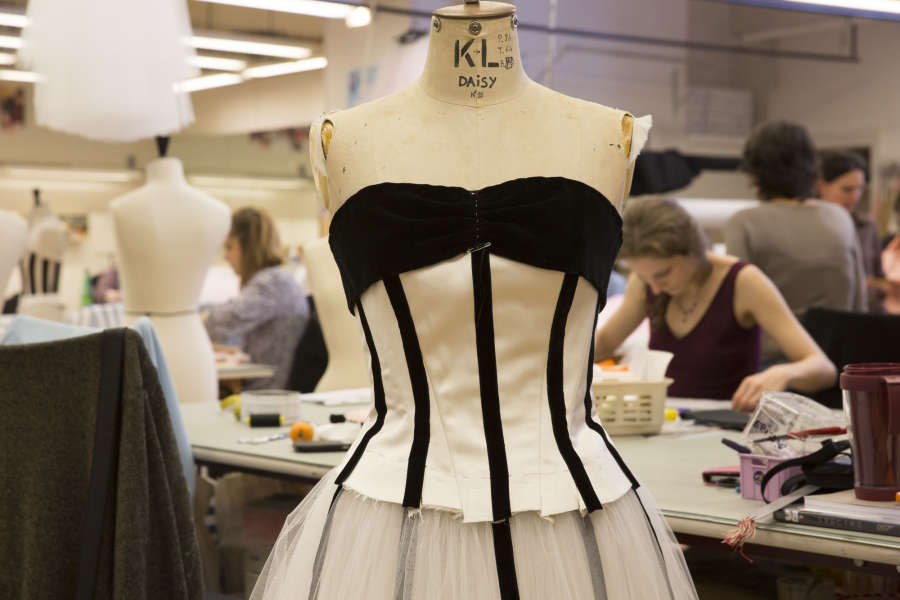
Image Credit: Operadefrance.fr
Use of luxurious fabrics and detailed embroidery created a sophisticated, glamorous environment of classic, understated elegance.
It also alluded to a previous era where clothing was symbolic of an individual’s social status and morality – whether actual or contrived. Lagerfeld’s set design purposefully evoked an ancient palace adorned with heavy, gray, floor-length drapery. This contrasted the color palette and texture of the costumes. Such an atmosphere was meant to reference the waning splendor of the Austro-Hungarian Empire.
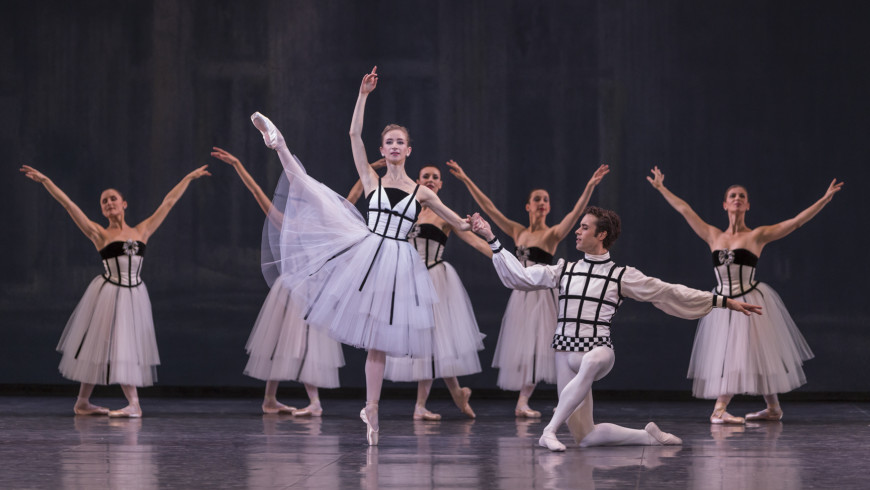
Artistic collaborations between the French heritage institution and fashion have steadily increased in the globalized economy. The OnP has hosted a variety of cultural events and fashion shows such as Stella McCartney and Dries van Noten. Moreover, the OnP has collaborated with renowned fashion designers including Christian Lacroix for George Balanchine’s Le Palais de cristal, and Yves Saint-Laurent for Roland Petit’s Notre-Dame de Paris.
Recently, it has begun collaborative efforts with contemporary, Avant-Garde fashion designers such as Iris van Herpen for Benjamin Millepied’s Clear, Loud, Bright, Forward, Alessandro Sartori for Millepied’s La nuit s’achève, and Mary Katranzou for Justin Peck’s Entre chien et loup.





